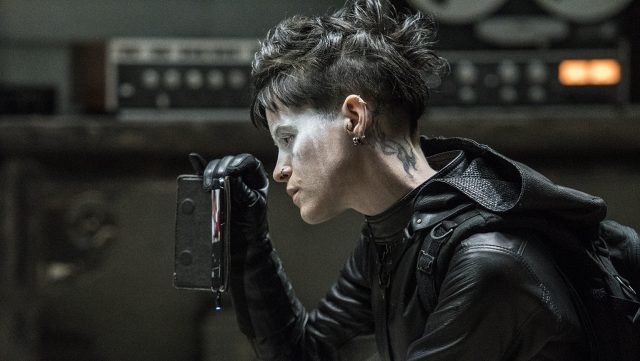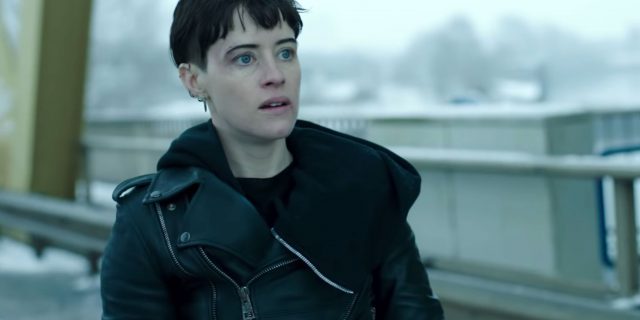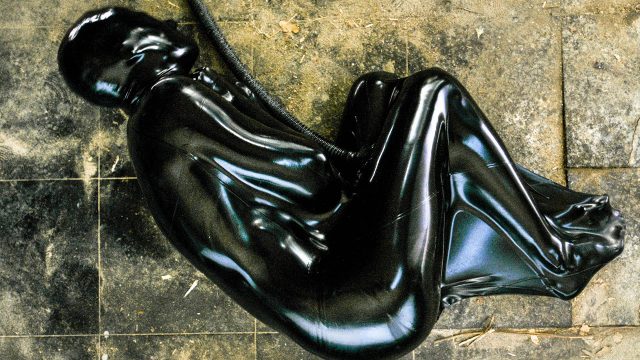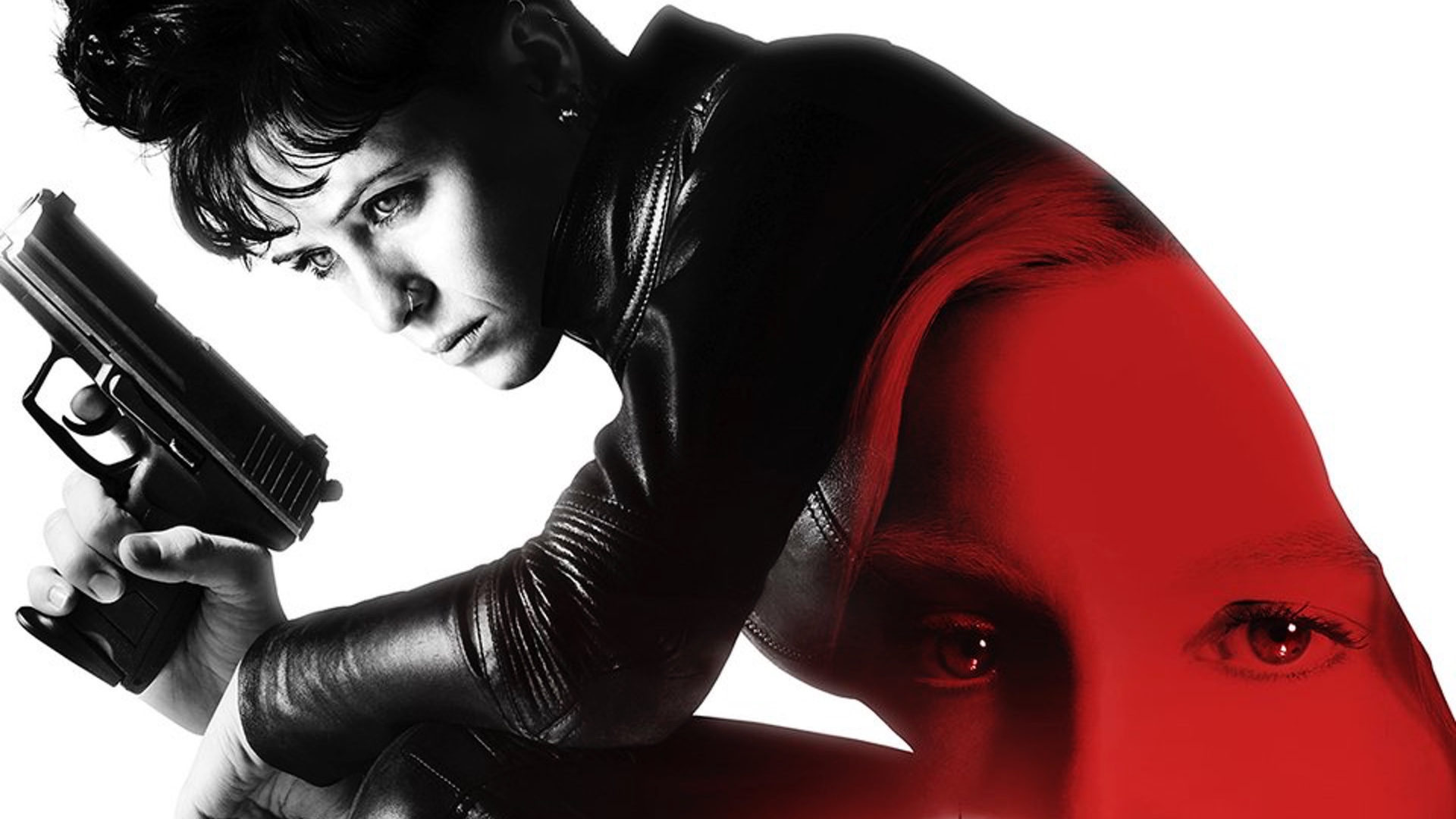They sometimes say that artists can’t be truly appreciated until after they’re dead. While many people in the modern era especially would certainly dispute this, considering our modern golden age of high-quality on-demand entertainment, the adage is certainly true for Swedish author and journalist, Stieg Larsson. After Larsson suffered a fatal heart attack and passed away in 2004, an entire trilogy of seedy thriller books that Larsson had written were discovered and handed off to publishers, resulting in something of a literary phenomenon that soon after became a cinematic phenomenon, after the trilogy of books went on to receive Swedish movie adaptations. These Swedish movie adaptations were so celebrated that they were even released in mainstream theatres here in domestic English-speaking territories, while also single-handedly launching a mainstream Hollywood career for lead female actress, Noomi Rapace! That’s not a bad achievement at all for an author that was already dead by the time his stories had made it to the public!
The popularity of these Swedish movies naturally created controversy when Sony Pictures and MGM acquired the domestic movie rights to Larsson’s novels, later dubbed as the ‘Millennium Trilogy’ by pundits, and wasted no time announcing a proper American remake of the first Millennium story, The Girl With the Dragon Tattoo. This remake would release in 2011, a mere two years after the original Swedish film adaptation of the same story, where it actually managed to garner positive reception from critics and most moviegoers, though was only a minor hit, turning a merely modest profit for Sony Pictures. This led to Sony dragging their feet on the planned American remake of the second story in the Millennium series, The Girl Who Played With Fire, which ultimately never materialized.

Sony instead decided to try and re-tool the franchise to be more general audience-friendly in hopes of increasing box office returns, doing away with some of the more aggressively uncomfortable and grim elements that define The Girl With the Dragon Tattoo in all its forms. On top of that, Sony also decided to simply skip the next two stories, which already have perfectly good Swedish movies to their name, and go right ahead on to the fourth book in the series, penned by author, David Lagercrantz, who has been authorized to write more Millennium novels after Larsson’s original trilogy of books started to gain mainstream popularity in prose and on film. Lagercrantz has since published two post-Larsson Millennium books, with the first, The Girl in the Spider’s Web, getting to be the basis of an American-exclusive movie adaptation that wasn’t previously preceded by a Swedish one.
Sony certainly saw the opportunity to build a more by-the-book thriller with Lagercrantz’s less exaggerated and less relentlessly bleak take on Larsson’s Millennium universe as well, and it’s quite evident that The Girl in the Spider’s Web fancies itself as a more traditional blockbuster than The Girl With the Dragon Tattoo. Ditching a lot of the over-the-top violence, all of the seedy sex and nudity, and anything else that might harsh the audience’s mellow, The Girl in the Spider’s Web attempts to present the franchise in more of a processed, fast food-esque form, complete with more impressive action and more white-knuckle thrills. It does manage to do that as well, particularly being anchored by its impressive new lead actress, Claire Foy, but in trying to distill itself down to be more audience-friendly, The Girl in the Spider’s Web also completely fails to stand out from most other cyber/crime thrillers. It’s a fair enough follow-up, but one that will also make you wish that Sony had just stuck to their more faithful original plans for the franchise.
The source novel for The Girl in the Spider’s Web once again places Swedish journalist, Mikael Blomkvist in a central role, but it’s clear that the movie adaptation recognizes that most people watch these movies for their female lead, Lisbeth Salander. Thus, the story of this movie has been considerably re-tooled even from a perspective viewpoint, completely inverting the perspectives so that it’s now Lisbeth seeking out the aid of Mikael, and not the other way around. This does make more sense beyond pandering to fans as well, considering the heavy connection that Lisbeth has to this movie’s villains, a connection that the trailers and even the opening minutes of the movie itself can’t help but immediately spoil. This perspective shift is also further helped by Claire Foy easily stealing the movie and running with it, portraying a Lisbeth that’s not as haunting or tragic as Rooney Mara’s former version of Lisbeth from the previous The Girl With the Dragon Tattoo, but one that also compensates by being noticeably tougher and more thrilling to watch.

Mikael does remain a part of the story to some extent, played here by Swedish actor, Sverrir Gudnason, who has the unenviable task of trying to follow up Daniel Craig in the role from The Girl With the Dragon Tattoo! Gudnason’s Blomkvist is obviously very different here, replacing Craig’s stubborn grit with a more unassuming everyman who almost feels like a friendly face that’s somehow being unfortunately subjected to Lisbeth’s dirty affairs. Gudnason is alright in the part, even if he feels like a mere spectator that’s simply along for the ride this time, but he’s definitely overshadowed by Foy, who gets all of the best and most impactful scenes for the most part. Even Edward Needham, an NSA security expert that’s been tasked with rounding up Lisbeth, played here by LaKeith Stanfield, feels like he’s given more to participate in than Mikael, getting some slightly bumped up involvement from how his character is portrayed in the book.
Every personality in the film adaptation of The Girl in the Spider’s Web is designed to glorify Lisbeth as much as possible, even Stephen Merchant, the other most recognizable Hollywood name in the cast aside from Foy, who is playing a former NSA employee that might as well just be a walking, talking plot device in this adaptation. The villains also end up tying heavily to Lisbeth, like I said, and since the marketing liberally gave it away, I suppose it’s fair game to say that the ultimate antagonist of the movie is Lisbeth’s own sister, Camilla, played by Dutch actress, Sylvia Hoeks. There’s an interesting take on creating a bit of a dark reflection of Lisbeth through Camilla, one that’s ironically presented as more bright and vibrant in appearance, but this is just another thing meant to make sure that Lisbeth is completely carrying the movie over anyone else. Really, how much you enjoy this film adaptation depends on how much you enjoy Lisbeth’s character, because if you don’t, then there’s literally nothing for you throughout most of this cast.
It seems that somewhere along the line, Sony Pictures must have gotten some feedback about The Girl With the Dragon Tattoo being too complicated for mainstream blockbuster audiences. I speculate this, because it seems that Sony was incredibly determined to dumb down the story of the source novel here, and that’s saying something, when the The Girl in the Spider’s Web’s original book already tried to lean in to making a more mainstream-friendly novel! Sony’s focus-testing hatchet men really went to work here, because The Girl in the Spider’s Web is indeed very dumbed down compared to its source novel, let alone the other Millennium stories, and Sony’s own American remake of The Girl With the Dragon Tattoo! The title even becomes a little bit ironic as a result, since, rather than feeling like a true ‘web’ of storytelling, everything in this movie adaptation is instead presented in the most straightforward fashion possible, even tipping viewers off to almost all of its plot turns well in advance. The entire story could be summed up as Lisbeth chasing a nuclear macguffin that can somehow bypass any nuclear defense system in the world (why someone would invent something like this, and how it would even work when nuclear systems are analogue and disconnected from other technology, I have no idea), and everyone else chasing after Lisbeth. That’s the whole plot, in a nutshell.

That’s not to say that there aren’t entertaining story beats in The Girl in the Spider’s Web, but this is definitely a movie that is trying too hard to appeal to the mainstream, sometimes veering aggressively from hewing closer to the spirit of the original Millennium books, before sharply pivoting, and injecting over-the-top action scenes and ridiculously precise scenarios. Some of the story ‘twists’ in The Girl in the Spider’s Web require such ridiculous precision in fact that they’re almost unintentionally funny, such as Lisbeth setting up a trust exercise for Needham at one point, which would have failed if it had played out even a second too early or too late! This feels like the kind of movie where audiences can constantly see the gears turning, even if it’s still in service of a fairly satisfactory plotting machine. You’ll be reasonably entertained during the better moments, but it would have been nice if so much of this movie wasn’t made to be so predictable.
Fede Alvarez takes over directing duties from David Fincher, after Fincher was previously hired by Sony for their original plan of American remakes for the first three Millennium books/Swedish movies. Alvarez is best known for his work directing horror movies, namely 2013’s surprisingly good remake of Evil Dead, and 2016’s also-surprisingly-good horror-thriller, Don’t Breathe. You’d think that Alvarez’s background in horror movies would naturally lend itself to the heinously seedy and uncomfortable world of Lisbeth Salander, and perhaps that intention was why Alvarez initially took the job, but his direction definitely feels hamstrung by studio intervention at almost every turn. Alvarez still manages to realize a few grisly and uncomfortable scenes here and there, but for the most part, he’s stuck helming a boilerplate cyber thriller that’s weirdly trying to present itself as a sanitized blockbuster, going completely against the spirit of the Millennium universe!

Stieg Larsson’s vision for the Millennium stories, and one that is replicated well enough with David Lagercrantz’s succession novels, is about making the reader/viewer feel dirty and uncomfortable, forced to confront the ugliest side of humanity. Alvarez is never allowed to really create this feeling during The Girl in the Spider’s Web however, being saddled with a script and studio that are doing everything in their power to make this adaptation as ‘safe’ as possible. These stories should never feel ‘safe’. They should feel deeply disturbing, poking at the darkest corners of the reader’s/viewer’s soul.
The Girl in the Spider’s Web however just plays out too much like a generic thriller, hitting the expected beats, and only rarely venturing into darker or more uncomfortable territory. This stands in stark contrast to the pretty great American remake of The Girl With the Dragon Tattoo that Sony delivered beforehand, all the way back in 2011, which definitely wasn’t afraid to delve into that highly seedy and twisted territory. Alvarez’s direction however has been forcibly distilled as much as possible, degrading into a movie that seems like it’s afraid to challenge the viewer’s expectations, and this in turn makes the fact that Sony is first to adapt The Girl in the Spider’s Web to film entirely pointless, because their adaptation ends up being fully disposable.
There was plenty to read into and lose yourself in during the effectively disconcerting and powerful American remake of The Girl With the Dragon Tattoo back in 2011. All of that shady, seedy substance has sadly been sucked out of this overdue Hollywood follow-up though. The Girl in the Spider’s Web may be a movie that’s passable, largely due to the talents of lead actress, Claire Foy, but it’s also utterly disposable in every other respect. The boilerplate storyline could be applied to just about any run-of-the-mill thriller, completely losing a lot of the uniquely disturbing appeal of Stieg Larsson’s Millennium universe. Even considering Foy’s great lead performance as Lisbeth Salander as well, her character has become so exaggerated and hyper-capable that she may as well exist in a comic book reality, or at the very least in the same over-the-top spy game world of James Bond and Ethan Hunt.
If you can accept the fact that The Girl in the Spider’s Web is both generic and ridiculous, two things that Larsson’s original Millennium stories seemed positively desperate to avoid being, then you’ll derive some modest entertainment from this movie, if you have a taste for undemanding thrillers. This definitely doesn’t merit a trip to the theatre however. If you happen to be a Millennium fan, or simply enjoy simple-minded cyber thrillers, then you should definitely wait to just rent The Girl in the Spider’s Web at home, or better still, wait for it to drop on a streaming platform for when you eventually have a couple of hours to kill.

It’s a huge shame that Sony couldn’t commit to their original vision for American adaptations of the Millennium stories. Perhaps it’s poetic justice then that The Girl in the Spider’s Web ended up being a genuine box office flop, rather than a merely modestly successful adaptation, like 2011’s American remake of The Girl With the Dragon Tattoo was. Maybe the American versions of these movies will be rebooted at some point in the future, possibly under a new studio, but they really deserved better under Sony’s watch. In the end, while it’s entertaining enough for fans of Lisbeth Salander at least, The Girl in the Spider’s Web merely cements the fact that Sony’s Millennium franchise failed to properly launch.

